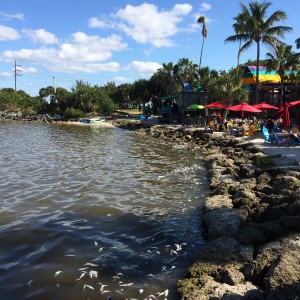NCCOS has approved a Harmful Algal Bloom Event Response project that will enhance state efforts to monitor and assess the extent of an active bloom of Aureoumbra lagunensis algae, also known as brown tide, in Florida’s northern Indian River Lagoon system. A massive fish kill last month was attributed to low dissolved oxygen conditions created by this large bloom.

A team led by theHarbor Branch Oceanographic Institute and the St. Johns River Water Management District (SJRWMD) will collect and analyze water samples to assess the concentration and extent of the brown tide bloom. The team will document key environmental parameters (i.e., dissolved inorganic carbon, total alkalinity, and dissolved oxygen) possibly driving bloom dynamics. They will also measure in situoptical and reflectance properties of the bloom and surrounding waters during sampling to help improve the use of remote sensing to rapidly assess future blooms.
The project will aid understanding of bloom ecology in the Indian River Lagoon system, and may lead to their prediction, supporting SJRWMD management goals.

For more information, contact Marc.Suddleson@noaa.gov.
